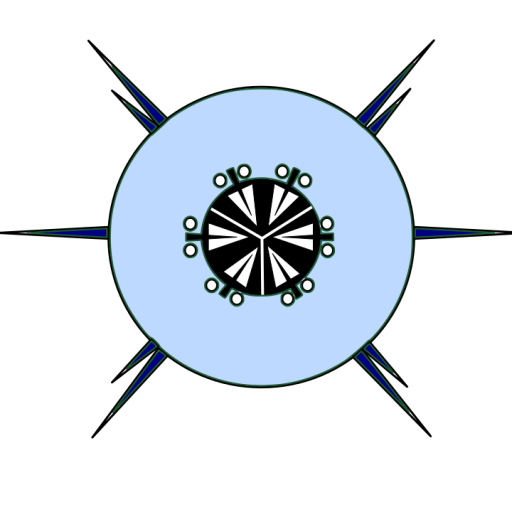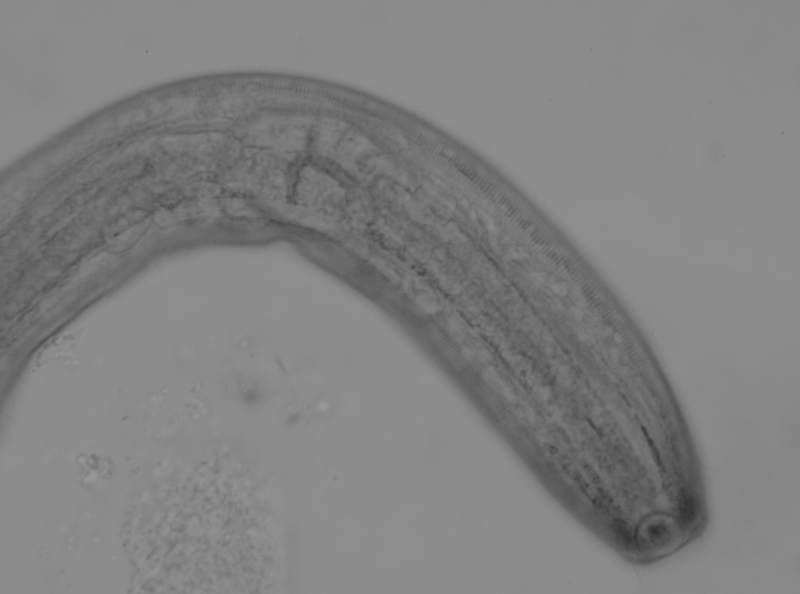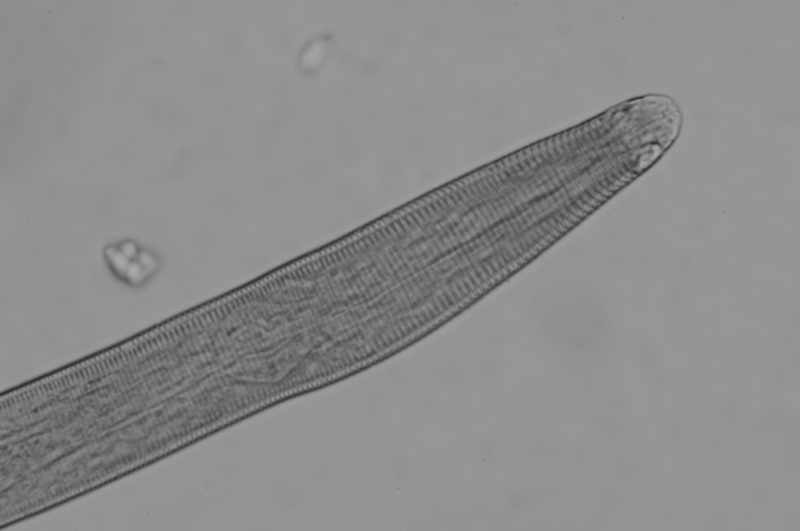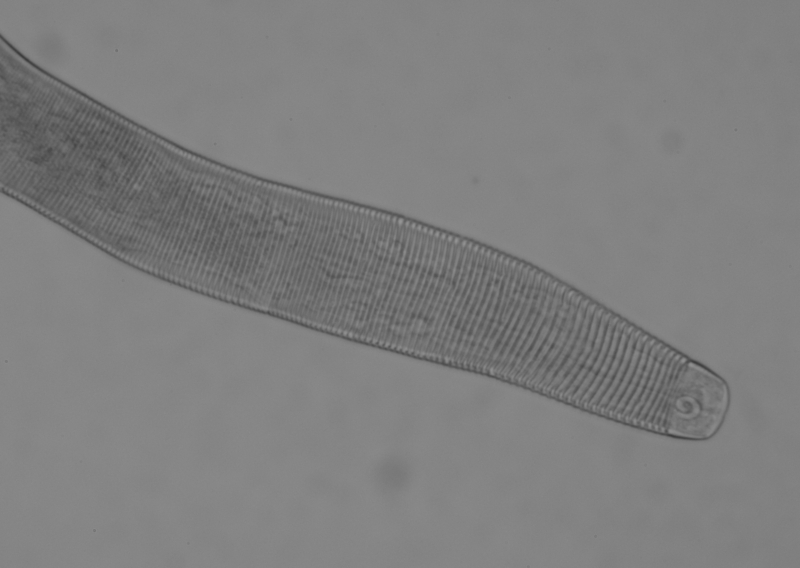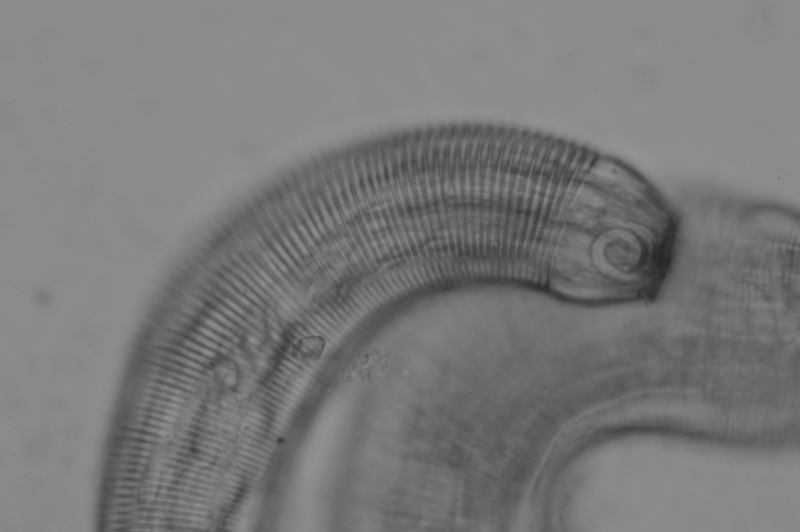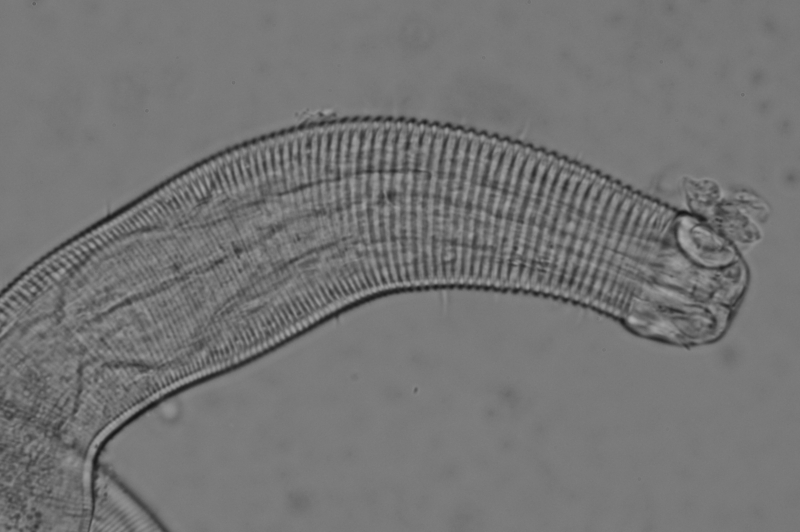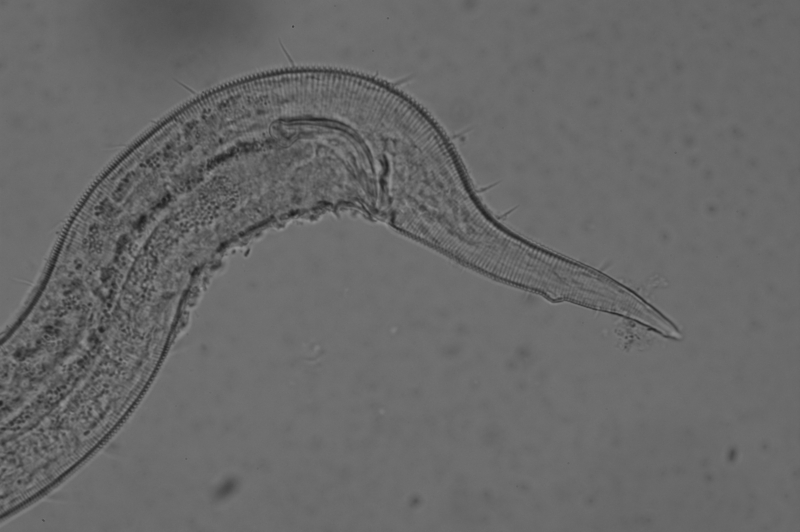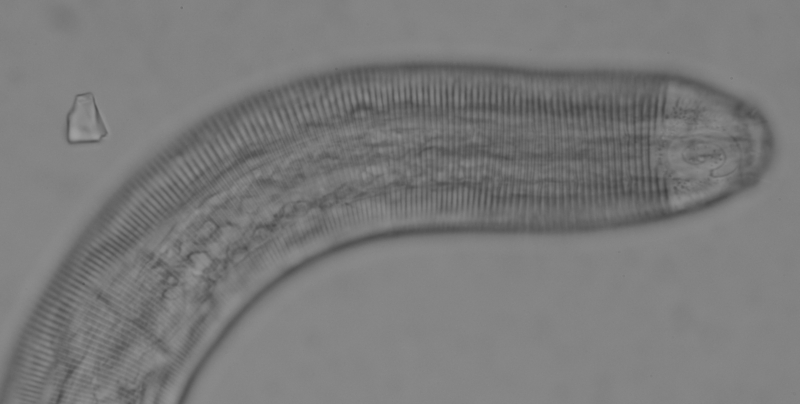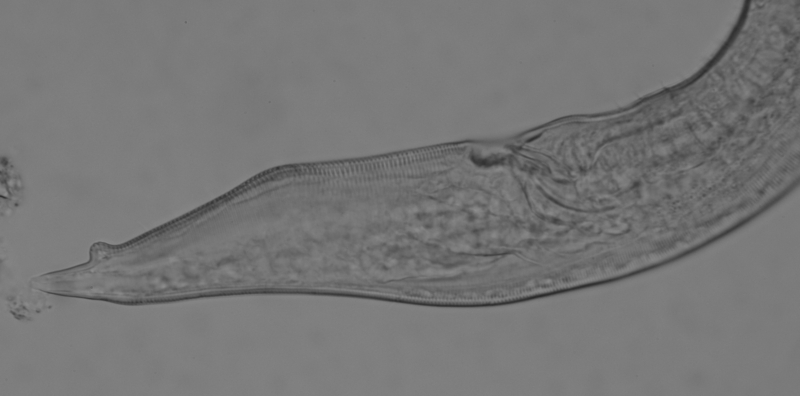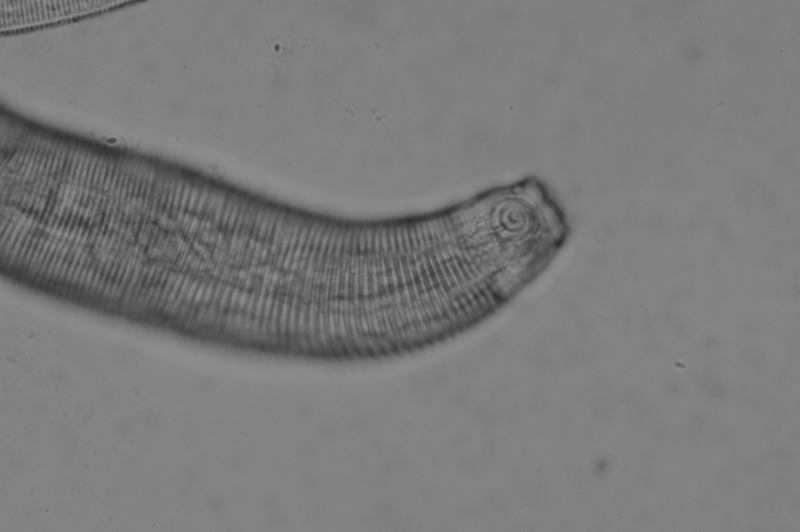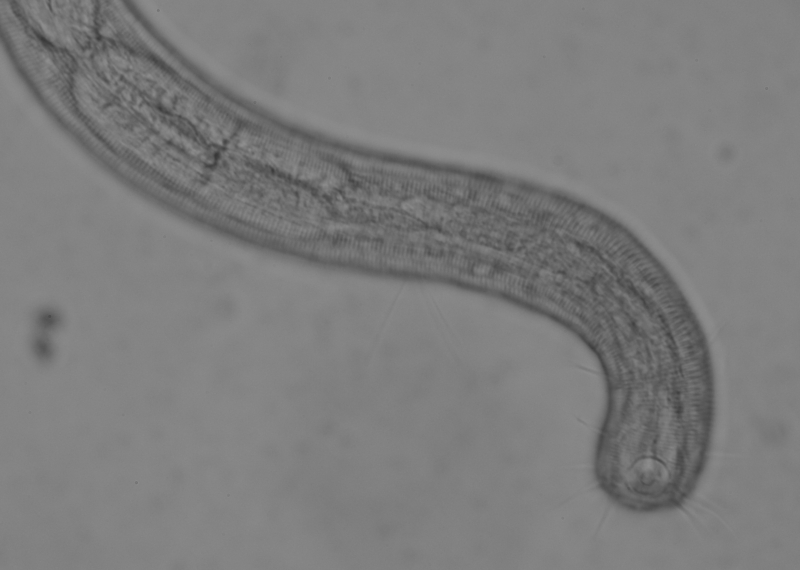Acanthopharyngoides chitwoodi
Acanthopharynx denticulata
Chromaspirina robusta (Wieser, 1954)
This individual was collected at Coihuin, Los Lagos region. This individual does not fit the description of C. robusta, but that description was based on juveniles only. This individual has abundant somatic setae of varying lengths, and six tubular (?) precloacal supplements.
Croconema stateni
Desmodora extensa
Desmodora inflexa
Desmodora minuta (Wieser, 1954)
This individual was collected at Coihuin, Los Lagos region.
This individual was collected at Coihuin, Los Lagos region.
This individual was collected at CIMAR station 21 at a depth of 163 m in the channel between the islands of Chaulinec and Chulin in the Chiloe inland sea, Los Lagos region. This female specimen has a large amphid with 1.5 turns positioned at the anterior end of the cephalic capsule. The labial setae just visible, the cephalic setae are short and arise in the posterior portion of the cephalic capsule. There are numerous short somatic setae the length of the body. The tip of the tail has no cuticular anulations.
Desmodora (Pseudochromadora) sp.1.
This individual was collected at CIMAR24 station 45 at a depth of 83 m at the southern end of the Morelada Channel, Aysen region. This male specimen matches the diagnosis for Desmodora (Pseudochromadora). There are longitudinal rows of short robust somatic setae. At the posterior end there are 6 precloacal supplements plus a precloacal setae, there also a swelling two thirds of the length of the tail which may be a potcloacal supplement.
Desmodora (Pseudochromadora) sp.2.
This individual was collected at CIMAR station 21 at a depth of 163 m in the channel between the islands of Chaulinec and Chulin in the Chiloe inland sea, Los Lagos region. This male specimen matches the diagnosis for Desmodora (Pseudocromadora). The cephalic capsule is robust. The large single loop amphid touches the posterior edge of the capsule disrupting the first couple of cuticular rings. There are regularly spaced rings of very short and difficult to see somatic setae. The gubernaculum is curved with a cephalate proximal end and the gubernaculum is a sort of stretched open sigma. There precloacal supplements are sestose, because of the way the body is twisted it is difficult to determine how many, but there are at least 20. The tail is conical with a swelling where the cuticular rings end, close to the tip.
Desmodorella perforata
This individual was collected at CIMAR24 station 77 at a depth of 212 m at the mouth of the Aysen Fjord, Aysen region. This female specimen does not match the descriptions of the Desmodorella species given by Wieser. The cephalic capsule is clearly defined with perforations in the posterior part, the amphid is multispiral 3.5 to 4 turns. There are no spines on the cuticular rings. The cuticular ornamentation is strongest on the anterior half of the specimen. The oesophageal bulb is rhomboid with two plasmatic interuptions. There are scattered long somatic setae. The posterior portion of the body is wider to accommodate the uterus and ovaries. The tail is elongate conical.
Molgolaimus tennispiculum
Onyx septempapillatus (Wieser, 1954)
This individual was collected at Coihuin, Los Lagos region.
Paradesmodora immersa
Perspiria septemtrionalis
Pseudometachromadora longilaima
